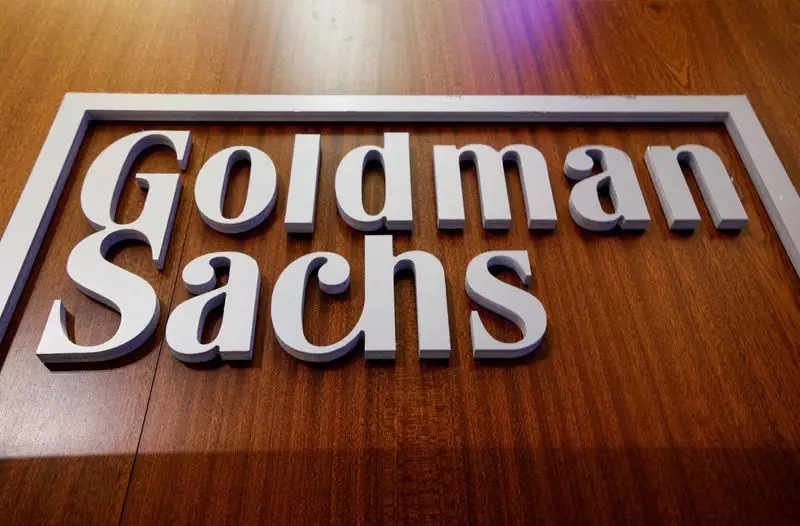Goldman Sachs has recently reported a formidable profit for the fourth quarter of 2024, marking its most substantial earnings since the latter part of 2021. The banking titan managed to exceed Wall Street expectations—an accomplishment that has sparked notable enthusiasm in the markets. The bank’s earnings of $11.95 per share significantly outperformed the anticipated $8.22, leading to a 2.6% increase in its stock price before the market opened. This upswing indicates a robust confidence among investors, buoyed by Goldman’s improved performance across various sectors, particularly in investment banking and trading operations.
Goldman Sachs’s success can be attributed to its adept maneuvering of market conditions, particularly in a period marked by recovering deal-making activities and a favorable interest rate environment. Market analysts speculate that ongoing adjustments by the U.S. Federal Reserve, coupled with the business-friendly climate ushered in by new political leadership, might solidify this momentum further into 2025.
One of the most telling indicators of Goldman Sachs’s success is the remarkable 24% surge in investment banking fees, totaling $2.05 billion in the last quarter. The primary driver behind this growth appears to be the bank’s robust performance in the debt underwriting sector, which has benefitted greatly from heightened corporate bond sales and leveraged financing. The resurgence of mergers and acquisitions (M&A) activities across the banking industry bolstered these numbers, paving the way for an overall industry recovery in the latter half of 2024.
Investment banking has been eclectic at Goldman; revenue from equity and debt underwriting witnessed staggering jumps—98% and 51%, respectively. Such increases are largely attributable to successful secondary and initial public offerings (IPOs) as well as private placements. While advisory revenue realized a 4% decline in the fourth quarter, it is projected to increase over the course of 2024, owing to the uptick in the number of completed deals.
Goldman Sachs’s asset and wealth management division also contributed positively to its overall earnings, with revenue climbing by 8% to $4.72 billion. This area of the business has become increasingly relevant as high-net-worth individuals and institutional clients seek sophisticated investment strategies. Likewise, the global banking and markets division saw a formidable increase of 33% in revenue, with equity trading generating an impressive 32% growth. This indicates Goldman’s capacity to harness broader market trends effectively, aligning its strategies with the ongoing stock market rally.
With an eye toward future diversification, Goldman has taken proactive measures by establishing new divisions aimed at financing substantial deals and extending loans to corporations. This strategic pivot speaks to a growing commitment to engage with the lucrative private credit market, offering potential avenues for sustainable revenue growth.
Despite its impressive performance, Goldman Sachs is not without challenges. The firm has had to reassess its consumer operations, which have resulted in significant losses in recent years. The criticisms leveled against CEO David Solomon for his previous enthusiasm towards retail banking underscore the complexities of navigating the consumer finance landscape.
While Goldman’s provisions for credit losses reduce—down to $351 million from $577 million a year prior—the bank remains vigilant. Such caution is particularly relevant given that the consumer credit sector can be unpredictable and riddled with risks, especially given the recent volatility in the credit card market.
Nonetheless, the revenue growth in the consumer segment demonstrated by the platform solutions unit—an increase of 16% to $669 million—suggests potential for recovery and a strategic resilience in adapting to changing market dynamics.
As Goldman Sachs stands on the threshold of 2025, its financial performance reflects a well-executed strategy that appears to be paying dividends. With a total revenue increase of 16% for the year to $53.51 billion and a growing workforce, the firm is strategically positioned to capitalize on the anticipated rise in dealmaking activity. Goldman Sachs’s ongoing transformation and its ability to adapt to market demands will be critical in determining its future trajectory.
The firm’s significant profit rise, coupled with increasing operational efficiencies, offers a strong foundation for further advancements. As Goldman Sachs continues to balance traditional banking roles with innovative financial solutions, it is poised to remain a key player in the financial sector, navigating both challenges and opportunities that lie ahead.

